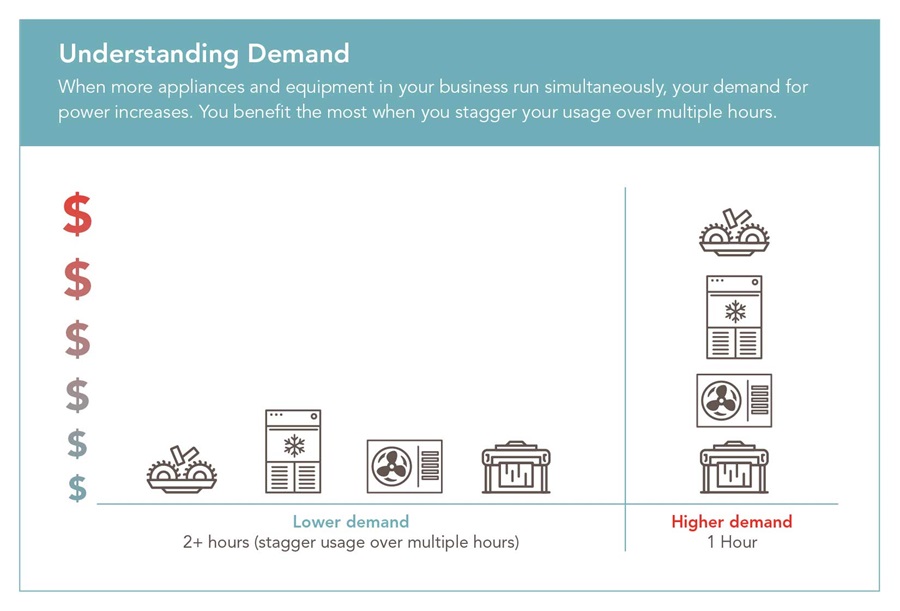Demand charge
Beginning January 1, 2024, we’re introducing a monthly demand charge to customers on the C&I TOD Secondary 0-20kW rate. This charge was part of the 2021 Commercial Rate Restructure and our ongoing efforts to ensure a reliable power supply for all our customers.
What is demand?
Demand refers to the maximum amount of energy usage at any one time, while energy is the total amount of power you use. It’s measured in kilowatts (kW) during a 15-minute interval and shows your impact on the grid to deliver that power. The higher the demand the more impact on the electrical grid to supply power.
The demand charge covers a share of the costs to maintain the grid including poles, wires and substations in your area. By separating your maximum rate of electricity used (kW) from your total electricity used (kWh), you can now see when you use the most energy (demand) and how you can manage it.

Why is a demand charge needed?
In 2021, we restructured rates to better align with the cost of providing electricity and the fixed costs of maintaining the infrastructure, Demand charges are not new, but rather we’re breaking them out of the fixed costs so that you can see when you’re using the most energy and how you can manage it. When you have a higher demand, that causes additional stress on the grid and has a bigger impact on maintenance costs and more.How is the demand charge calculated?
For the C&I TOD secondary 0-20 kW rate the demand charge on your monthly bill will be calculated based on the highest power demand recorded during that billing month: multiplying the peak demand value (kW) by the relevant demand charge. This charge will be applied in addition to your existing energy usage charges. For customers with a demand greater than 20kW, the demand charge may be based on the highest recorded demand in the past twelve months. You can view your current rate at smud.org/BusinessRates.How can I manage my usage?
You can manage your usage during higher demand periods by making changes in when and how you operate appliances and systems that are high energy users. Here are some tips to consider:
- Shift energy use to different time periods.
- Stagger the use of heavy equipment to eliminate spikes in demand.
- Power down electronics when your business closes for the day.
- Reduce the number of devices that you operate at the same time.
- Use equipment at a lower intensity.
- Enroll in Automated Demand Response (ADR) programs to automatically scale back your energy use. Learn more at smud.org/PowerDirect.
- Reach out to your Strategic Account Advisor for additional tips to manage your energy usage at smud.org/MyAdvisor.
Log in to My Account to see your demand history to help you manage your usage.



